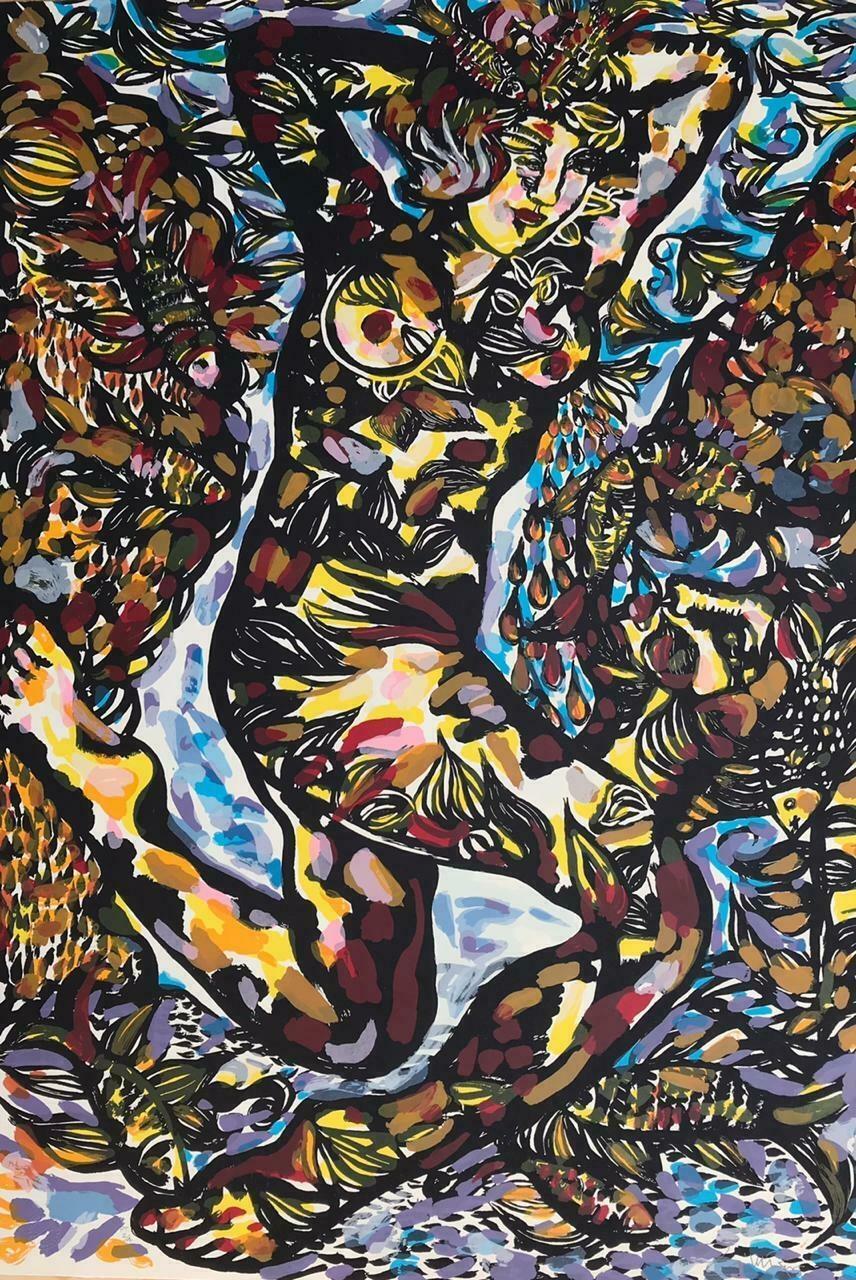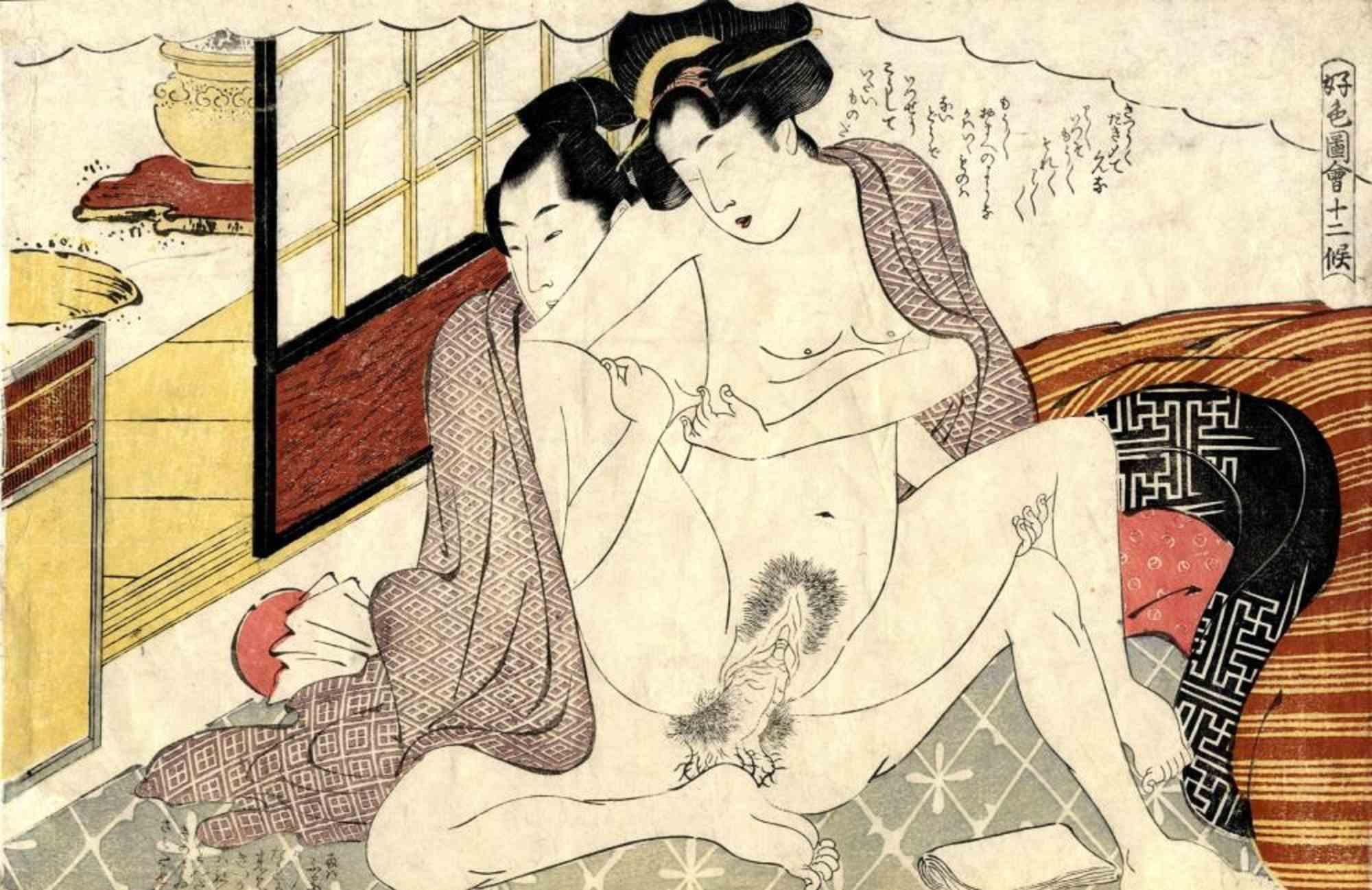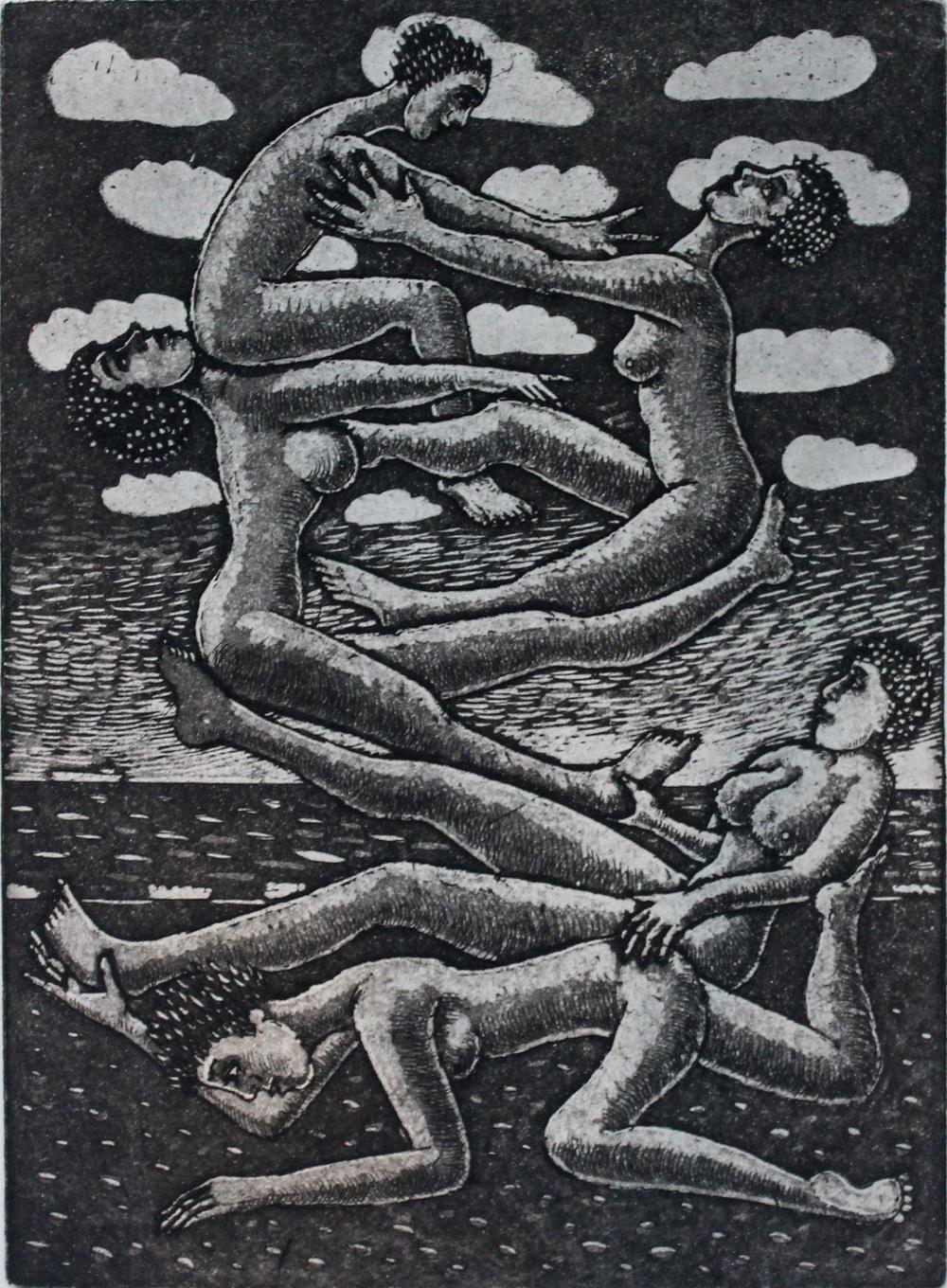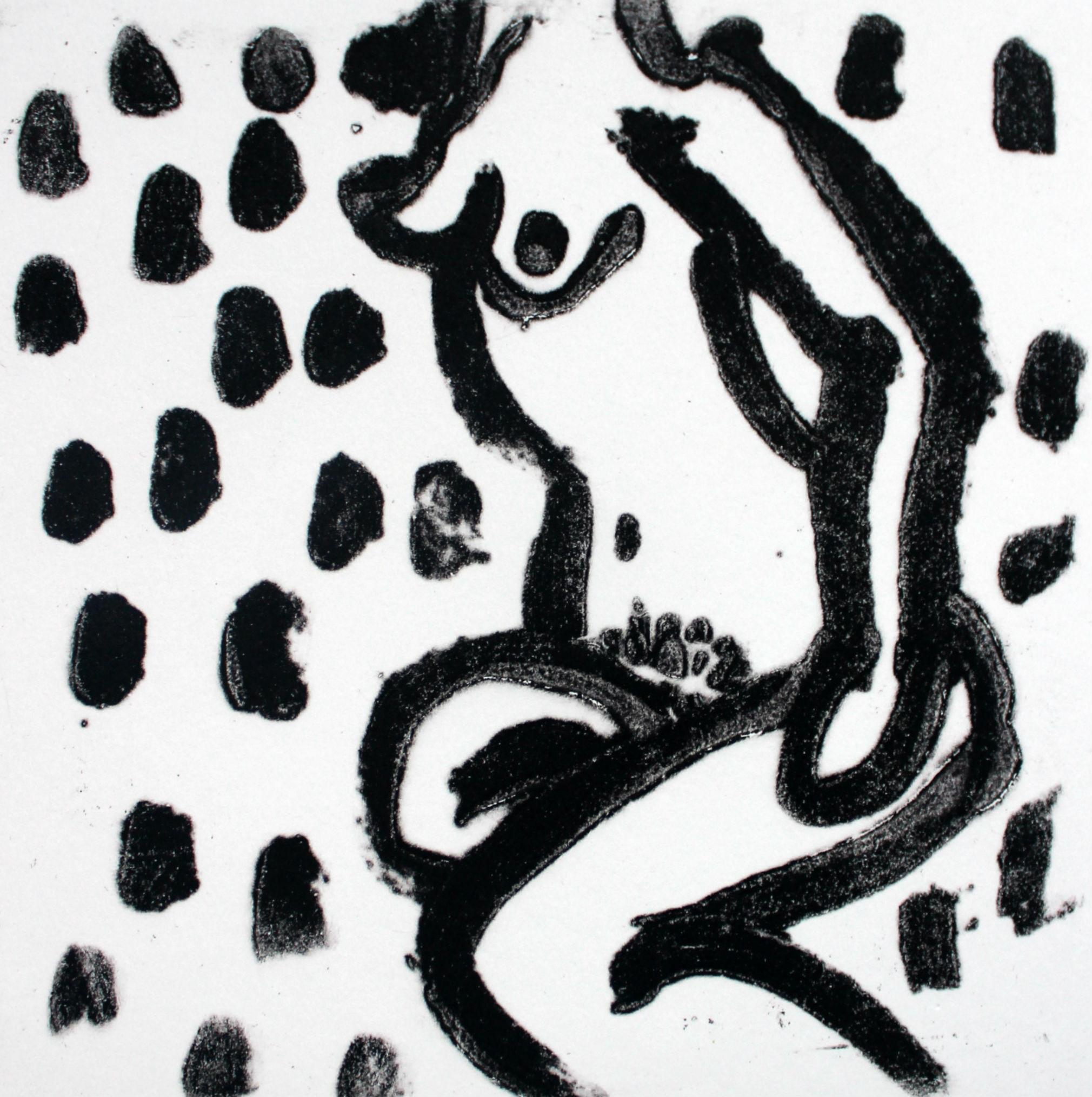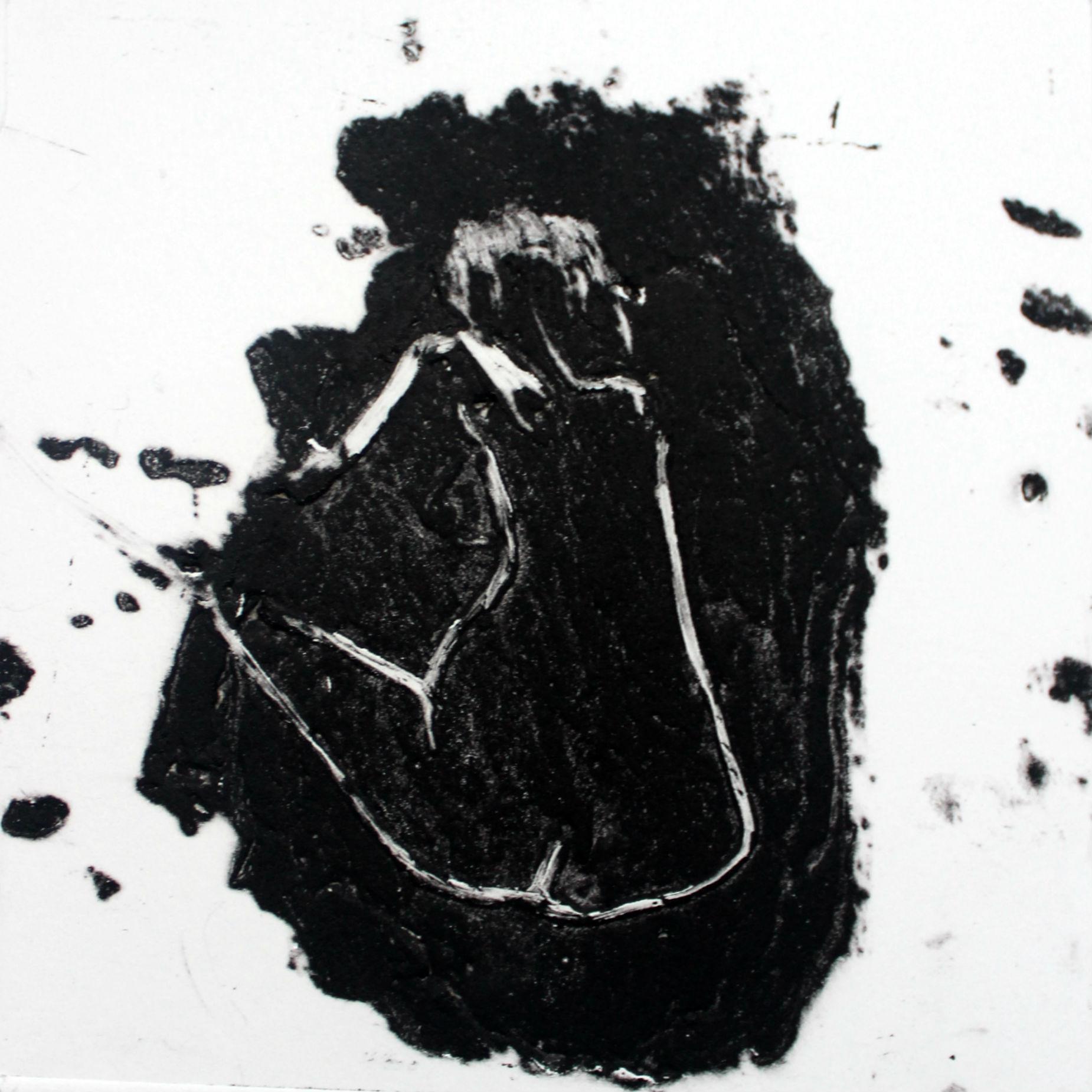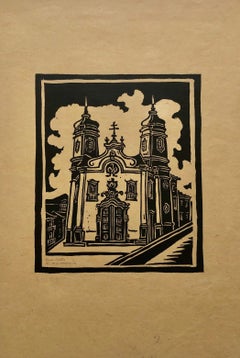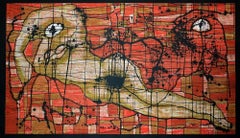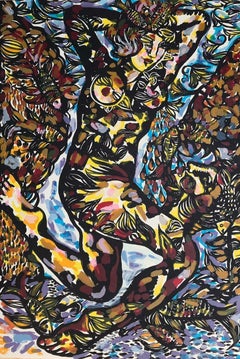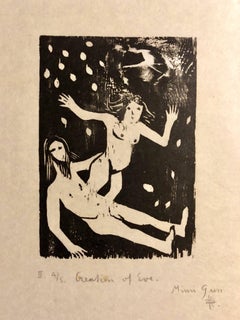
Woodcut Print, 'Creation of Eve' Bible Scene Signed Small Edition
View Similar Items
Want more images or videos?
Request additional images or videos from the seller
1 of 8
Mimi GrossWoodcut Print, 'Creation of Eve' Bible Scene Signed Small Edition
About the Item
- Creator:
- Dimensions:Height: 19.5 in (49.53 cm)Width: 12.5 in (31.75 cm)
- Medium:Tissue Paper,Woodcut
- Movement & Style:
- Period:
- Condition:woodblock prints on a thin tissue like paper. the image is well away from the margins. the margins all have wear. should mat out fine. we have included the photos. the cover is not included. just the one print.
- Gallery Location:Surfside, FL
- Reference Number:1stDibs: LU3822879011
About the Seller
4.9
Platinum Seller
These expertly vetted sellers are 1stDibs' most experienced sellers and are rated highest by our customers.
Established in 1995
1stDibs seller since 2014
1,549 sales on 1stDibs
Typical response time: 1 hour
More From This SellerView All
- 1945 Brazilian Master, Art Deco Nudes Serigraph Woodcut Carnaval BahiaBy Odetto GuersoniLocated in Surfside, FLGenre: Brazilian Art Deco, African Diaspora Bahian Carnival Subject: Abstract Medium: Print Surface: Paper Country: Brazil Dimensions of overall paper are listed. This is from a series of work he did in the 1940's, we sold one called Ritmo Negro, they are about Afro-Brazilian jazz, dance and music. Odetto Guersoni was born in the city of Jaboticabal, State of São Paulo, in 1924. From 1936 to 1941 he attended the Liceu de Artes de Ofícios in São Paulo, beginning his artistic career in 1945, when he exhibited paintings in the Hall of the Plastic Artists Union . Two years later he was part of the collective group of 19, alongside Aldemir, Charoux, Otavio Araújo, Grassmann, Maria Leontina and several other artists that time would make famous. He then practiced a figurative painting of accentuated Expressionist lauds, characterized by deformation and coloring, raw and Satirical- as, moreover, so many of his fellow exhibitors at the time. As a French government scholar, Odette Guerzoni went to Paris in 1947 and the following year took part in the Peintres et Graveurs Etrangers and Art Libre exhibitions. Student of engraving by Renê Cottet, gradually transformed this expressive medium into his favorite, to the detriment of painting, which he practically abandoned soon after. In 1947, he participated in the 19 Painters exhibition at the Prestes Maia Gallery together with Lothar Charoux, Maria Leontina,Grassmann, Aldemir Martins, Luiz Sacilotto and hiró. Guersoni was awarded a scholarship by the French government, and traveled to Paris, where he began work in engraving. Back in Brazil, in 1951, he founded the Art Workshop, in São Paulo. In 1954, he returned to Europe for a year, financed by the International Labor Organization (ILO). In Geneva, he studied engraving with René Cottet (1902 - 1992) and worked in Stanley william Hayter's studio, Atelier 17, in Paris (1901 - 1988). From 1956 to 1957, he became director of the Union of Plastic Artists of São Paulo. From 1960, he attended, as a trainee, some art schools in the United States and Japan such as The New York School of Printing and Osaka University. In 1971, also in Japan, he attended the workshop of I. Jokuriti. Two years later, he was voted Best Recorder of the Year by the Paulista Association of Art Critics - APCA. He took part in a special room at the Ibero-American Biennial in Montevideo in 1983. The Pinacoteca do Estado de São Paulo - Pesp presents a retrospective of his work in 1994. Odetto Guersoni explores the wide spectrum of possibilities of the engraving. In addition to using techniques such as metal etching, lithograph, serigraph, linocut and, especially, woodcut he developed, in the 1950s, the philigraphy, in which the forms he developed gained points of embroidery made by Bonadei (1906 - 1974) . And, in the 1960s, the plastigraphy, in which he makes engravings on pasty surfaces, obtained from gypsum or other soft material. In the 1970s, technical investigations were associated with pictographic, ideographic, archaic symbol searches, Brazilian cave paintings and plant forms. The drawings are reduced to stylized, geometric shapes and transformed into abstract graphic elements. The artist works with few matrices, which, organized in rectangles, squares or circles, become modules to be combined. Guersoni juxtaposes them, adds, changes colors, and thereby composes colorful mandalas and structural geometries. Based on concise compositions, it produces color vibrations through optical illusions. In many of his woodcut works of the 1980s he uses smooth wood, knives, saws, gouges, punches, avoiding the natural textures of wood. In printing, it leaves the vibrant color and employs dosed inks with colorless masses, obtaining transparencies by superpositions. New journeys of study and specialization in engraving techniques took him in 1954 to Switzerland, 1960 to the United States, and in 1966 to Germany and Austria. Today, after having performed more than 40 individuals including 16 abroad and having participated in more than 50 collectives in several countries, Guersoni is considered one of the most notable Brazilian engravers. Conquered awards in several shows. CHRONOLOGY Individual exhibitions 1946 - Sao Paulo SP - 10th Salon of the Artists' Union, at the Prestes Maia Gallery 1947 - São Paulo SP - 19 Painters, at the Prestes Maia Gallery 1948 - Paris France - Peintres et Graveurs Etrangers at the École des Beaux-Arts 1949 - São Paulo SP - 13th Salon of the Artists' Union, at the Prestes Maia Gallery 1951 - São Paulo SP - 1st Paulista Salon of Modern Art, at Prestes Maia Gallery - silver medal 1953 - São Paulo SP - 2nd International Biennial of São Paulo, at MAM / SP 1954 - São Paulo SP - 3rd Paulista Salon of Modern Art, in the Prestes Maia Gallery 1955 - Rio de Janeiro RJ - 4th National Salon of Modern Art 1955 - Salvador BA - 5th Baiano Salon of Fine Arts, in Belvedere da Sé - honorable mention 1962 - São Paulo SP - Leirner Prize for Contemporary Art at the Folha Art Gallery - 1st printing award 1963 - Curitiba PR - 20th Salão Paranaense de Belas Artes, at the Public Library of Paraná 1963 - Rio de Janeiro RJ - Individual, no MAM / RJ 1968 - Bradford England - First International Print Biennale 1970 - São Paulo SP - Antonio Henrique Amaral, Odetto Guersoni, Tomie Ohtake, Pedro Tort and Gerda Brentani, in the Alberto Bonfiglioli Gallery 1971 - São Paulo SP - 11th International Biennial of São Paulo, at the Biennial Foundation - acquisition award 1973 - Punta del Este Uruguay - 1st Engraving Meeting of the Prata Basin Countries - International Prize 1977 - São Paulo SP - The Groups: the 40's, at the Lasar Segall Museum 1982 - São Paulo SP - Ismenia Coaracy, Odetto Guersoni and Alice Brill...Category
1940s Art Deco Nude Prints
MaterialsWoodcut
- 1945 Brazilian Master, Art Deco Clown Serigraph WoodcutBy Odetto GuersoniLocated in Surfside, FLGenre: Brazilian Art Deco, African Diaspora Bahian Carnival Subject: harlequin clown Medium: Print Surface: Paper Country: Brazil Dimensions of overall paper are listed. This is from a series of work he did in the 1940's, we sold one called Ritmo Negro, they are about Afro-Brazilian jazz, dance and music. Odetto Guersoni was born in the city of Jaboticabal, State of São Paulo, in 1924. From 1936 to 1941 he attended the Liceu de Artes de Ofícios in São Paulo, beginning his artistic career in 1945, when he exhibited paintings in the Hall of the Plastic Artists Union . Two years later he was part of the collective group of 19, alongside Aldemir, Charoux, Otavio Araújo, Grassmann, Maria Leontina and several other artists that time would make famous. He then practiced a figurative painting of accentuated Expressionist lauds, characterized by deformation and coloring, raw and Satirical- as, moreover, so many of his fellow exhibitors at the time. As a French government scholar, Odette Guerzoni went to Paris in 1947 and the following year took part in the Peintres et Graveurs Etrangers and Art Libre exhibitions. Student of engraving by Renê Cottet, gradually transformed this expressive medium into his favorite, to the detriment of painting, which he practically abandoned soon after. In 1947, he participated in the 19 Painters exhibition at the Prestes Maia Gallery together with Lothar Charoux, Maria Leontina,Grassmann, Aldemir Martins, Luiz Sacilotto and hiró. Guersoni was awarded a scholarship by the French government, and traveled to Paris, where he began work in engraving. Back in Brazil, in 1951, he founded the Art Workshop, in São Paulo. In 1954, he returned to Europe for a year, financed by the International Labor Organization (ILO). In Geneva, he studied engraving with René Cottet (1902 - 1992) and worked in Stanley william Hayter's studio, Atelier 17, in Paris (1901 - 1988). From 1956 to 1957, he became director of the Union of Plastic Artists of São Paulo. From 1960, he attended, as a trainee, some art schools in the United States and Japan such as The New York School of Printing and Osaka University. In 1971, also in Japan, he attended the workshop of I. Jokuriti. Two years later, he was voted Best Recorder of the Year by the Paulista Association of Art Critics - APCA. He took part in a special room at the Ibero-American Biennial in Montevideo in 1983. The Pinacoteca do Estado de São Paulo - Pesp presents a retrospective of his work in 1994. Odetto Guersoni explores the wide spectrum of possibilities of the engraving. In addition to using techniques such as metal etching, lithograph, serigraph, linocut and, especially, woodcut he developed, in the 1950s, the philigraphy, in which the forms he developed gained points of embroidery made by Bonadei (1906 - 1974) . And, in the 1960s, the plastigraphy, in which he makes engravings on pasty surfaces, obtained from gypsum or other soft material. In the 1970s, technical investigations were associated with pictographic, ideographic, archaic symbol searches, Brazilian cave paintings and plant forms. The drawings are reduced to stylized, geometric shapes and transformed into abstract graphic elements. The artist works with few matrices, which, organized in rectangles, squares or circles, become modules to be combined. Guersoni juxtaposes them, adds, changes colors, and thereby composes colorful mandalas and structural geometries. Based on concise compositions, it produces color vibrations through optical illusions. In many of his woodcut works of the 1980s he uses smooth wood, knives, saws, gouges, punches, avoiding the natural textures of wood. In printing, it leaves the vibrant color and employs dosed inks with colorless masses, obtaining transparencies by superpositions. New journeys of study and specialization in engraving techniques took him in 1954 to Switzerland, 1960 to the United States, and in 1966 to Germany and Austria. Today, after having performed more than 40 individuals including 16 abroad and having participated in more than 50 collectives in several countries, Guersoni is considered one of the most notable Brazilian engravers. Conquered awards in several shows. CHRONOLOGY Individual exhibitions 1946 - Sao Paulo SP - 10th Salon of the Artists' Union, at the Prestes Maia Gallery 1947 - São Paulo SP - 19 Painters, at the Prestes Maia Gallery 1948 - Paris France - Peintres et Graveurs Etrangers at the École des Beaux-Arts 1949 - São Paulo SP - 13th Salon of the Artists' Union, at the Prestes Maia Gallery 1951 - São Paulo SP - 1st Paulista Salon of Modern Art, at Prestes Maia Gallery - silver medal 1953 - São Paulo SP - 2nd International Biennial of São Paulo, at MAM / SP 1954 - São Paulo SP - 3rd Paulista Salon of Modern Art, in the Prestes Maia Gallery 1955 - Rio de Janeiro RJ - 4th National Salon of Modern Art 1955 - Salvador BA - 5th Baiano Salon of Fine Arts, in Belvedere da Sé - honorable mention 1962 - São Paulo SP - Leirner Prize for Contemporary Art at the Folha Art Gallery - 1st printing award 1963 - Curitiba PR - 20th Salão Paranaense de Belas Artes, at the Public Library of Paraná 1963 - Rio de Janeiro RJ - Individual, no MAM / RJ 1968 - Bradford England - First International Print Biennale 1970 - São Paulo SP - Antonio Henrique Amaral, Odetto Guersoni, Tomie Ohtake, Pedro Tort and Gerda Brentani, in the Alberto Bonfiglioli Gallery 1971 - São Paulo SP - 11th International Biennial of São Paulo, at the Biennial Foundation - acquisition award 1973 - Punta del Este Uruguay - 1st Engraving Meeting of the Prata Basin Countries - International Prize 1977 - São Paulo SP - The Groups: the 40's, at the Lasar Segall Museum 1982 - São Paulo SP - Ismenia Coaracy, Odetto Guersoni and Alice Brill...Category
1940s Art Deco Nude Prints
MaterialsWoodcut
- 1945 Brazilian Master, Art Deco Serigraph Woodcut Colonial Architecture MissionBy Odetto GuersoniLocated in Surfside, FLGenre: Brazilian Art Deco, African Diaspora Bahian Carnival Subject: Abstract Medium: Print Surface: Paper Country: Brazil Dimensions of overall paper are listed. This is from a series of work he did in the 1940's, we sold one called Ritmo Negro, they are about Afro-Brazilian jazz, dance and music. Odetto Guersoni was born in the city of Jaboticabal, State of São Paulo, in 1924. From 1936 to 1941 he attended the Liceu de Artes de Ofícios in São Paulo, beginning his artistic career in 1945, when he exhibited paintings in the Hall of the Plastic Artists Union . Two years later he was part of the collective group of 19, alongside Aldemir, Charoux, Otavio Araújo, Grassmann, Maria Leontina and several other artists that time would make famous. He then practiced a figurative painting of accentuated Expressionist lauds, characterized by deformation and coloring, raw and Satirical- as, moreover, so many of his fellow exhibitors at the time. As a French government scholar, Odette Guerzoni went to Paris in 1947 and the following year took part in the Peintres et Graveurs Etrangers and Art Libre exhibitions. Student of engraving by Renê Cottet, gradually transformed this expressive medium into his favorite, to the detriment of painting, which he practically abandoned soon after. In 1947, he participated in the 19 Painters exhibition at the Prestes Maia Gallery together with Lothar Charoux, Maria Leontina,Grassmann, Aldemir Martins, Luiz Sacilotto and hiró. Guersoni was awarded a scholarship by the French government, and traveled to Paris, where he began work in engraving. Back in Brazil, in 1951, he founded the Art Workshop, in São Paulo. In 1954, he returned to Europe for a year, financed by the International Labor Organization (ILO). In Geneva, he studied engraving with René Cottet (1902 - 1992) and worked in Stanley william Hayter's studio, Atelier 17, in Paris (1901 - 1988). From 1956 to 1957, he became director of the Union of Plastic Artists of São Paulo. From 1960, he attended, as a trainee, some art schools in the United States and Japan such as The New York School of Printing and Osaka University. In 1971, also in Japan, he attended the workshop of I. Jokuriti. Two years later, he was voted Best Recorder of the Year by the Paulista Association of Art Critics - APCA. He took part in a special room at the Ibero-American Biennial in Montevideo in 1983. The Pinacoteca do Estado de São Paulo - Pesp presents a retrospective of his work in 1994. Odetto Guersoni explores the wide spectrum of possibilities of the engraving. In addition to using techniques such as metal etching, lithograph, serigraph, linocut and, especially, woodcut he developed, in the 1950s, the philigraphy, in which the forms he developed gained points of embroidery made by Bonadei (1906 - 1974) . And, in the 1960s, the plastigraphy, in which he makes engravings on pasty surfaces, obtained from gypsum or other soft material. In the 1970s, technical investigations were associated with pictographic, ideographic, archaic symbol searches, Brazilian cave paintings and plant forms. The drawings are reduced to stylized, geometric shapes and transformed into abstract graphic elements. The artist works with few matrices, which, organized in rectangles, squares or circles, become modules to be combined. Guersoni juxtaposes them, adds, changes colors, and thereby composes colorful mandalas and structural geometries. Based on concise compositions, it produces color vibrations through optical illusions. In many of his woodcut works of the 1980s he uses smooth wood, knives, saws, gouges, punches, avoiding the natural textures of wood. In printing, it leaves the vibrant color and employs dosed inks with colorless masses, obtaining transparencies by superpositions. New journeys of study and specialization in engraving techniques took him in 1954 to Switzerland, 1960 to the United States, and in 1966 to Germany and Austria. Today, after having performed more than 40 individuals including 16 abroad and having participated in more than 50 collectives in several countries, Guersoni is considered one of the most notable Brazilian engravers. Conquered awards in several shows. CHRONOLOGY Individual exhibitions 1946 - Sao Paulo SP - 10th Salon of the Artists' Union, at the Prestes Maia Gallery 1947 - São Paulo SP - 19 Painters, at the Prestes Maia Gallery 1948 - Paris France - Peintres et Graveurs Etrangers at the École des Beaux-Arts 1949 - São Paulo SP - 13th Salon of the Artists' Union, at the Prestes Maia Gallery 1951 - São Paulo SP - 1st Paulista Salon of Modern Art, at Prestes Maia Gallery - silver medal 1953 - São Paulo SP - 2nd International Biennial of São Paulo, at MAM / SP 1954 - São Paulo SP - 3rd Paulista Salon of Modern Art, in the Prestes Maia Gallery 1955 - Rio de Janeiro RJ - 4th National Salon of Modern Art 1955 - Salvador BA - 5th Baiano Salon of Fine Arts, in Belvedere da Sé - honorable mention 1962 - São Paulo SP - Leirner Prize for Contemporary Art at the Folha Art Gallery - 1st printing award 1963 - Curitiba PR - 20th Salão Paranaense de Belas Artes, at the Public Library of Paraná 1963 - Rio de Janeiro RJ - Individual, no MAM / RJ 1968 - Bradford England - First International Print Biennale 1970 - São Paulo SP - Antonio Henrique Amaral, Odetto Guersoni, Tomie Ohtake, Pedro Tort and Gerda Brentani, in the Alberto Bonfiglioli Gallery 1971 - São Paulo SP - 11th International Biennial of São Paulo, at the Biennial Foundation - acquisition award 1973 - Punta del Este Uruguay - 1st Engraving Meeting of the Prata Basin Countries - International Prize 1977 - São Paulo SP - The Groups: the 40's, at the Lasar Segall Museum 1982 - São Paulo SP - Ismenia Coaracy, Odetto Guersoni and Alice Brill...Category
1940s Art Deco Nude Prints
MaterialsWoodcut
- 1945 Brazilian Master, Art Deco Nudes Serigraph Woodcut Carnaval BahiaBy Odetto GuersoniLocated in Surfside, FLGenre: Brazilian Art Deco, African Diaspora Bahian Carnival Subject: Abstract Medium: Print Surface: Paper Country: Brazil Dimensions of overall paper are listed. This is from a series of work he did in the 1940's, we sold one called Ritmo Negro, they are about Afro-Brazilian jazz, dance and music. Odetto Guersoni was born in the city of Jaboticabal, State of São Paulo, in 1924. From 1936 to 1941 he attended the Liceu de Artes de Ofícios in São Paulo, beginning his artistic career in 1945, when he exhibited paintings in the Hall of the Plastic Artists Union . Two years later he was part of the collective group of 19, alongside Aldemir, Charoux, Otavio Araújo, Grassmann, Maria Leontina and several other artists that time would make famous. He then practiced a figurative painting of accentuated Expressionist lauds, characterized by deformation and coloring, raw and Satirical- as, moreover, so many of his fellow exhibitors at the time. As a French government scholar, Odette Guerzoni went to Paris in 1947 and the following year took part in the Peintres et Graveurs Etrangers and Art Libre exhibitions. Student of engraving by Renê Cottet, gradually transformed this expressive medium into his favorite, to the detriment of painting, which he practically abandoned soon after. In 1947, he participated in the 19 Painters exhibition at the Prestes Maia Gallery together with Lothar Charoux, Maria Leontina,Grassmann, Aldemir Martins, Luiz Sacilotto and hiró. Guersoni was awarded a scholarship by the French government, and traveled to Paris, where he began work in engraving. Back in Brazil, in 1951, he founded the Art Workshop, in São Paulo. In 1954, he returned to Europe for a year, financed by the International Labor Organization (ILO). In Geneva, he studied engraving with René Cottet (1902 - 1992) and worked in Stanley william Hayter's studio, Atelier 17, in Paris (1901 - 1988). From 1956 to 1957, he became director of the Union of Plastic Artists of São Paulo. From 1960, he attended, as a trainee, some art schools in the United States and Japan such as The New York School of Printing and Osaka University. In 1971, also in Japan, he attended the workshop of I. Jokuriti. Two years later, he was voted Best Recorder of the Year by the Paulista Association of Art Critics - APCA. He took part in a special room at the Ibero-American Biennial in Montevideo in 1983. The Pinacoteca do Estado de São Paulo - Pesp presents a retrospective of his work in 1994. Odetto Guersoni explores the wide spectrum of possibilities of the engraving. In addition to using techniques such as metal etching, lithograph, serigraph, linocut and, especially, woodcut he developed, in the 1950s, the philigraphy, in which the forms he developed gained points of embroidery made by Bonadei (1906 - 1974) . And, in the 1960s, the plastigraphy, in which he makes engravings on pasty surfaces, obtained from gypsum or other soft material. In the 1970s, technical investigations were associated with pictographic, ideographic, archaic symbol searches, Brazilian cave paintings and plant forms. The drawings are reduced to stylized, geometric shapes and transformed into abstract graphic elements. The artist works with few matrices, which, organized in rectangles, squares or circles, become modules to be combined. Guersoni juxtaposes them, adds, changes colors, and thereby composes colorful mandalas and structural geometries. Based on concise compositions, it produces color vibrations through optical illusions. In many of his woodcut works of the 1980s he uses smooth wood, knives, saws, gouges, punches, avoiding the natural textures of wood. In printing, it leaves the vibrant color and employs dosed inks with colorless masses, obtaining transparencies by superpositions. New journeys of study and specialization in engraving techniques took him in 1954 to Switzerland, 1960 to the United States, and in 1966 to Germany and Austria. Today, after having performed more than 40 individuals including 16 abroad and having participated in more than 50 collectives in several countries, Guersoni is considered one of the most notable Brazilian engravers. Conquered awards in several shows. CHRONOLOGY Individual exhibitions 1946 - Sao Paulo SP - 10th Salon of the Artists' Union, at the Prestes Maia Gallery 1947 - São Paulo SP - 19 Painters, at the Prestes Maia Gallery 1948 - Paris France - Peintres et Graveurs Etrangers at the École des Beaux-Arts 1949 - São Paulo SP - 13th Salon of the Artists' Union, at the Prestes Maia Gallery 1951 - São Paulo SP - 1st Paulista Salon of Modern Art, at Prestes Maia Gallery - silver medal 1953 - São Paulo SP - 2nd International Biennial of São Paulo, at MAM / SP 1954 - São Paulo SP - 3rd Paulista Salon of Modern Art, in the Prestes Maia Gallery 1955 - Rio de Janeiro RJ - 4th National Salon of Modern Art 1955 - Salvador BA - 5th Baiano Salon of Fine Arts, in Belvedere da Sé - honorable mention 1962 - São Paulo SP - Leirner Prize for Contemporary Art at the Folha Art Gallery - 1st printing award 1963 - Curitiba PR - 20th Salão Paranaense de Belas Artes, at the Public Library of Paraná 1963 - Rio de Janeiro RJ - Individual, no MAM / RJ 1968 - Bradford England - First International Print Biennale 1970 - São Paulo SP - Antonio Henrique Amaral, Odetto Guersoni, Tomie Ohtake, Pedro Tort and Gerda Brentani, in the Alberto Bonfiglioli Gallery 1971 - São Paulo SP - 11th International Biennial of São Paulo, at the Biennial Foundation - acquisition award 1973 - Punta del Este Uruguay - 1st Engraving Meeting of the Prata Basin Countries - International Prize 1977 - São Paulo SP - The Groups: the 40's, at the Lasar Segall Museum 1982 - São Paulo SP - Ismenia Coaracy, Odetto Guersoni and Alice Brill...Category
1940s Art Deco Nude Prints
MaterialsWoodcut
- New Years 1988, Keith Haring Pop Art Nude Color Silkscreen Print InvitationBy Keith HaringLocated in Surfside, FLArtist: Keith Haring, American (1958 - 1990) Title: New Year's Invitation 1988 Year: 1988 Medium: Silkscreen on Paper Image Size: 11 x 8 inches This bears a printed signature. It is not hand signed as issued. Keith Allen Haring (May 4, 1958 – February 16, 1990) was an American artist and social activist whose work responded to the New York City street culture of the 1980s by expressing concepts of birth, death, sexuality, and war. Haring's work was often heavily political and his imagery has become a widely recognized visual language of the 20th century. Keith Haring was born in Reading, Pennsylvania, on May 4, 1958. He was raised in Kutztown, Pennsylvania, by his mother Joan Haring, and father Allen Haring, an engineer and amateur cartoonist. He had three younger sisters, Kay, Karen and Kristen. Haring became interested in art at a very early age spending time with his father producing creative drawings. His early influences included Walt Disney cartoons, Dr. Seuss, Charles Schulz, and the Looney Tunes characters in The Bugs Bunny Show. In Haring's teenage years, he left his religious background behind and hitchhiked across the country, selling vintage t-shirts and experimenting with drugs. He studied commercial art from 1976 to 1978 at Pittsburgh's Ivy School of Professional Art but lost interest in it. He made the decision to leave after having read Robert Henri's The Art Spirit (1923) which inspired him to concentrate on his own art. Haring had a maintenance job at the Pittsburgh Center for the Arts and was able to explore the art of Jean Dubuffet, Jackson Pollock, and Mark Tobey. His most critical influences at this time were a 1977 retrospective of the work of Pierre Alechinsky and a lecture by the sculptor Christo in 1978. Alechinsky's work, connected to the international Expressionist group CoBrA, gave Haring confidence to create larger paintings of calligraphic images. Christo introduced him to the possibilities of involving the public with his art. Haring's first important one-man exhibition was in Pittsburgh at the Center for the Arts in 1978. He moved to New York to study painting at the School of Visual Arts. He studied semiotics with Bill Beckley as well as exploring the possibilities of video and performance art. Profoundly influenced at this time by the writings of William Burroughs, he was inspired to experiment with the cross-referencing and interconnection of images. He first received public attention with his public art in subways. Starting in 1980, he organized exhibitions at Club 57, which were filmed by the photographer Tseng Kwong Chi. Around this time, "The Radiant Baby" became his symbol. His bold lines, vivid colors, and active figures carry strong messages of life and unity. He participated in the Times Square Exhibition and drew animals and human faces for the first time. That same year, he photocopied and pasted provocative collages made from cut-up and recombined New York Post headlines around the city. In 1981, he sketched his first chalk drawings on black paper and painted plastic, metal, and found objects. By 1982, Haring had established friendships with fellow emerging artists Futura 2000, Kenny Scharf, Madonna and Jean-Michel Basquiat. He created more than 50 public works between 1982 and 1989 in dozens of cities around the world. His "Crack is Wack" mural, created in 1986, is visible from New York's FDR Drive. He got to know Andy Warhol, who was the theme of several of Haring's pieces, including "Andy Mouse". His friendship with Warhol would prove to be a decisive element in his eventual success. In December 2007, an area of the American Textile Building in the TriBeCa neighborhood of New York City was discovered to contain a painting of Haring's from 1979. In 1984, Haring visited Australia and painted wall murals in Melbourne (such as the 1984 'Detail-Mural at Collingwood College, Victoria') and Sydney and received a commission from the National Gallery of Victoria and the Australian Centre for Contemporary Art to create a mural which temporarily replaced the water curtain at the National Gallery. He also visited and painted in Rio de Janeiro, the Musée d'Art Moderne de la Ville de Paris, Minneapolis and Manhattan.[9] He became politically active, designing a Free South Africa poster...Category
20th Century Contemporary Nude Prints
MaterialsMixed Media, Screen
- Lithuanian French Cubist Modernist Lithograph "Flight" RefugeesBy Jacques LipchitzLocated in Surfside, FLActual sheet is 25 X 20 size includes frame. Hand signed and numbered. The Flight exhibition comes from a portfolio of prints organized by Varian Fry in 1964 and completed in 1971. B...Category
1960s Modern Figurative Prints
MaterialsLithograph
You May Also Like
- Sergio Hernandez, "La Maja", 2017, Woodcut 87x42inBy Sergio HernándezLocated in Miami, FLSergio Hernández (Mexico, 1957) 'La Maja', 2017 woodcut on paper Velin Arches 300 g. 46.9 x 82.7 in. (119 x 210 cm.) Edition of 30 UnframedCategory
2010s Contemporary Figurative Prints
MaterialsPaper, Ink, Woodcut
- Zaida de Río, ¨Untitled 3¨, 2020, Woodcut, 42.9x29.1 inBy Zaida del RíoLocated in Miami, FLZaida del Rio (Cuba, 1954) 'Untitled 3', 2020 woodcut on paper Intaglio 300 g. 43 x 29.2 in. (109 x 74 cm.) Edition of 40 ID: DER-105 UnframedCategory
2010s Contemporary Figurative Prints
MaterialsWoodcut, Paper
$1,200 Sale Price20% Off - Antonio Diaz Cortes, "Encuentro", 2006, Woodcut 28x20 inBy Antonio Díaz CortésLocated in Miami, FLAntonio Diaz Cortes (Mexico, 1935) 'Encuentro', 2006 woodcut on paper Velin Arches 300 g. 27.6 x 19.7 in. (70 x 50 cm.) Edition of 99 Unframed ID: DIA-107 Hand-signed by authorCategory
Early 2000s Contemporary Nude Prints
MaterialsPaper, Ink, Linocut, Woodcut
- Three Scenes from a Tiny Riot - Set of Three Woodcut Prints by Tom HuckBy Tom HuckLocated in Chicago, ILTriptych Tom Huck Three Scenes from a Tiny Riot, 2016 Woodcut Triptych on Arches 88 paper 20 h x 21 w (Ball of Hate) 17 h x 14 w (Rumble Thumpin) 17 h x 14 w (Bag-O-Hedz) 20/25Category
21st Century and Contemporary Contemporary Figurative Prints
MaterialsWoodcut
- Seishi Ai-oi Genji – Set of 12 Shunga works together w/astrological commentaryBy Utagawa Kunisada (Toyokuni III)Located in Middletown, NYSet of 12 woodblock prints in colors on handmade, laid mulberry paper, 6 3/4 x 10 1/4 inches (170 x 258 mm), printed in Ka-ei 4 (1851). Each print with minor handling wear, otherwise in excellent condition with bright and fresh color, and with details printed in silver ink. The images themselves contain several illusive characters indicating the publisher which are obfuscated by figures, as intended. Presented loose, as issued. A fine set. The astrological commentary print has a large and meandering blind stamp with a bird and palm frond motif. This print lists various phrases concerning the Twelve Zodiac Animals as historically counted in Japan, and appears to include erotic commentary on the traits of people born under each of the twelve signs. These Shunga images were issued in books that paralleled (in an erotic fashion...Category
Mid-19th Century Edo Nude Prints
MaterialsHandmade Paper, Ink, Woodcut
- Shunga - Woodcut by Katsukawa Schuncho - Mid-18th CenturyBy Katsukawa ShunshōLocated in Roma, ITShunga is an original modern artwork realized by Katsukawa Schuncho (1726 – 1793) in the half of the 18th Century. Oban yokoe. Erotic scene from the series "Koshuko zue juni ko" (Erotic pictures...Category
1750s Modern Figurative Prints
MaterialsWoodcut, Paper

